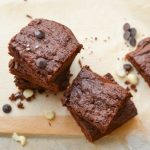MCT Oil: Metabolism, Fat Burning, and Beyond

It’s a good time to be a medium-chain triglyceride (MCT). These fats, not too long and not too short, are the Goldilocks of saturated fats—long enough to provide some real energy to a cell, but not so long to be readily stored as fat. But the interest in MCT is borne from multiple benefits, beyond just the energetic.
Storing vs. Burning
Fat cells very readily store long-chain triglycerides (LCT), those fats extending from around 14 carbons and beyond. However, the shorter the fat, the less inclined a fat cell is to notice it. At 12 carbons, we reach the MCT lengths, going as short as six carbons. While there is a potential to store some 12-length MCT, it stops there; the shorter MCT have only one fate—get burned.
Additionally, due to their shorter length, MCT have a unique intestinal absorption route. Whereas LCT move through the intestinal wall and then into the blood as part of a (relatively) large molecule called a chylomicron, which distributes fat throughout the body, MCT go it alone. By moving directly into the blood on their own, MCT follow the traditional route of absorbed nutrients, going from the guts to the liver. Once arrived, the liver has only one option with MCT—they must be burned, and more fat burning at the liver means the production of fat-burning products, namely ketones. This is why MCT are so much more ketogenic than LCT.
But MCT take it one step further by promoting the production of the metabolic machinery that helps a cell use the fats. MCT actually stimulate cells to make more mitochondria, the very site of fat burning within a cell [1]. This increased mitochondrial biogenesis potentially means more fat burning all around, but it certainly makes for easy burning of the MCT.
Beyond the Burn
The most common source of MCT in most diets is from coconut oil. Coconut oil is unique compared with other MCT, especially pure MCT oil, in that it contains the longest of the MCT—the 12-carbon lauric acid. Lauric acid has similar, albeit slightly lower, ketone-producing potential of its shorter colleagues, but it makes up the difference with additional talents. Lauric acid, the primary fat in coconut oil, is known to elicit anti-microbial effects, potentially facilitating the immune system [2]. Furthermore, coconut oil, which is the one of the best sources of MCT, has been shown to elicit favorable metabolic changes in humans, including weight loss and improved blood lipids [3, 4].
A Tiny Bit Tart
One interesting dietary aspect of fat length is how the length influences flavor. Whereas LCT have no flavor, the shorter the fats get, including on the shorter end of MCT, the more tart they taste. This is certainly why apple cider vinegar is so tart—it’s made entirely of short-chain triglycerides (i.e., acetic acid). But we don’t have to get that short to notice the tartness.
Have you ever drank goat milk? If so, you very likely noted how tart it tasted, especially compared with cow milk. The difference lies in the fat. Cow milk is rich with LCT (a wide variety), but goat milk has relatively higher amounts of MCT, especially the shorter MCT, which is responsible for the unique flavor. Indeed, goat milk is such a great source of these shorter MCT that their technical names are derived from the Latin word for “goat” (i.e., “capra”), including capric, caprylic, and caproic acids.
Take-away Thoughts
MCT are not essential fats, but their metabolic relevance is hard to ignore. By including MCT in your diet, such as through coconut oil, goat dairy, or a little pure MCT oil, you’ll be getting a ketogenic boost while helping your body develop the enzymatic machinery to burn fat better.
References
1 Wang, Y., Liu, Z., Han, Y., Xu, J., Huang, W. and Li, Z. (2018) Medium Chain Triglycerides enhances exercise endurance through the increased mitochondrial biogenesis and metabolism. PloS one. 13, e0191182
2 Nakatsuji, T., Kao, M. C., Fang, J. Y., Zouboulis, C. C., Zhang, L., Gallo, R. L. and Huang, C. M. (2009) Antimicrobial property of lauric acid against Propionibacterium acnes: its therapeutic potential for inflammatory acne vulgaris. J Invest Dermatol. 129, 2480-2488
3 Cardoso, D. A., Moreira, A. S., de Oliveira, G. M., Raggio Luiz, R. and Rosa, G. (2015) A Coconut Extra Virgin Oil-Rich Diet Increases Hdl Cholesterol and Decreases Waist Circumference and Body Mass in Coronary Artery Disease Patients. Nutricion hospitalaria. 32, 2144-2152
4 Nevin, K. G. and Rajamohan, T. (2004) Beneficial effects of virgin coconut oil on lipid parameters and in vitro LDL oxidation. Clinical biochemistry. 37, 830-835
This article is for informational and educational purposes only. It is not, nor is it intended to be substitute for professional medical advice, diagnosis, or treatment and should never be relied upon for specific medical advice.



















